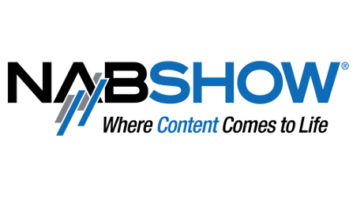New to NAB Show this year is what organizers called an “unconventional keynote session.”
Sunday morning, NAB convened several past recipients of the NAB Engineering Achievement Award to participate in a panel of mini-keynotes. NAB EVP and CTO Sam Matheny acted as moderator, and participants were asked to address “the single most important challenge for the future of broadcasting.”
The participants were: E. Glynn Walden, Entercom consultant; John Turner, principal engineer, Turner Engineering Inc.; Ben Dawson, president of Hatfield & Dawson Consulting Engineers, LLC; Laurence Thorpe of Canon U.S.A.; Ronald Rackley, VP of duTreil, Lundin & Rackley; Ira Goldstone, executive engineer at FOX Studios; Thomas Silliman, president of Electronic Research Inc.; S. Merrill Weiss, president of Merrill Weiss Group; Frank Foti, executive chairman of the board for The Telos Alliance; Mark Richer, president of ATSC; Tom King, president and CEO of Kintronic Labs Inc.; Robert Seidel, vice president of CBS Engineering and Advanced Technology for CBS Television Network; Andy Laird, retired VP of engineering/CTO emeritus for Journal Broadcast Group; Richard Friedel, EVP and GM of FOX Network Engineering and Operations; John Kean, consulting engineer for Cavell Mertz & Associates; and Rich Chernock, chief science officer for Triveni Digital.
As part of the session, Rackley used his time to promote the cause of updating interference standards to reflect modern challenges.For those who could not attend the “Joint Keynote Address: Previous Engineering Award Winners,”
The following is a transcript of remarks delivered by Rackley.
I am grateful for having been able to enjoy my work every day over the past 45 years that I have been a consulting radio engineer, but there is one area of unfinished business that I would like to see receive serious attention while I am still around — revising the requirements of the FCC rules to recognize that it is not the 1930s anymore when it comes to the environment of noise and interference in which AM stations broadcast.
Fortunately, we have the AM revitalization rulemaking that is being considered by the FCC for that, and an FCC chairman who would like to see it taken seriously.
The comments that have been filed with the FCC in the rulemaking contain a lot of well thought-out scientific analysis of both the limitations on AM station coverage due to noise and man-made interference today and how proper administration of revised station-to-station interference standards could help.
But, those comments sit there on the record unheeded — with the rulemaking process at a stalemate — because of pushback from broadcasters that was inspired by the severity of some of the rule changes that were initially proposed by the FCC. Many comments prepared by expert consulting engineers support compromise standards that I think address the controversies well.
I believe the time has come for those with differing perspectives on questions having to do with how AM stations should protect each other from interference to meet together and iron out good solutions, aimed at optimizing AM radio service to the public day and night, that are acceptable to all.
I am going to be so bold as to suggest that the NAB might be able to play a pivotal role in pulling such an effort together. Thank you.











